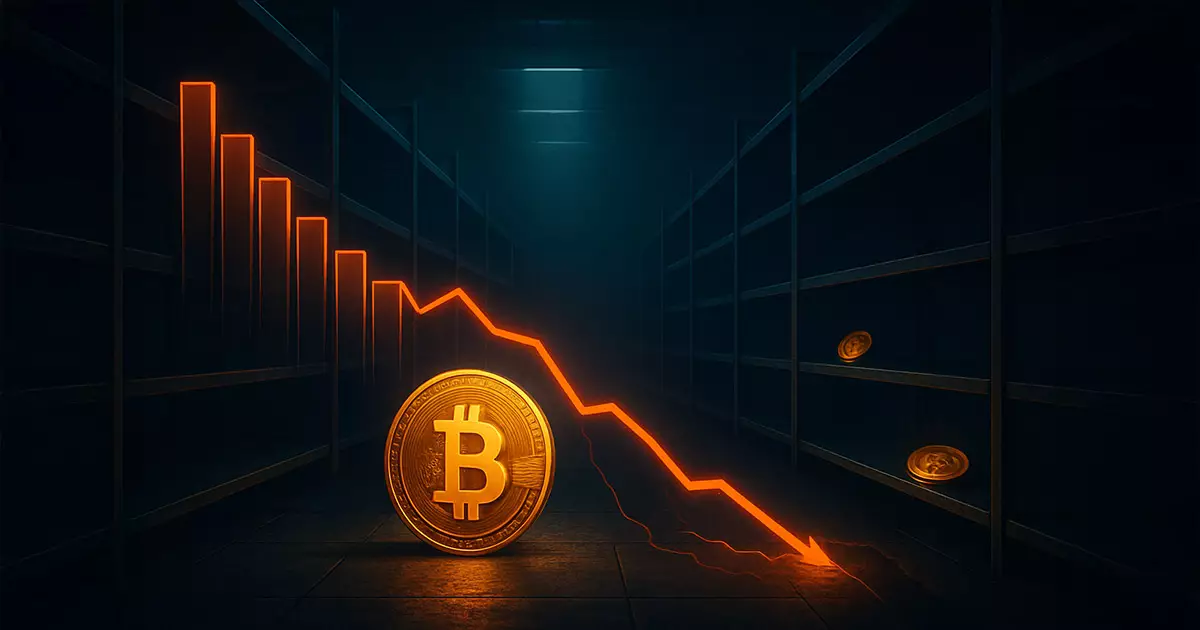As we approach mid-2025, a significant phenomenon in the cryptocurrency landscape warrants scrutiny: the unprecedented reduction of Bitcoin held on centralized exchanges. A recent report from CryptoQuant reveals that the count has dwindled to 2.5 million BTC, marking the lowest level since 2019. This 500,000 BTC reduction over four months is not merely trivial statistics—it’s a signal of a seismic shift rooted in investor psychology and market dynamics. Many believe that this decline in available coins points to a growing preference for self-custodial wallets, an indicator that Bitcoin is increasingly being viewed as a long-term asset rather than a quick flip for short-term profits.
This transition towards self-custody has been intensifying since early 2023, evidenced by the staggering drop from 3.2 million BTC. It’s essential to dissect this narrative further. The underlying motivations driving investors toward private wallets could reflect a deeper distrust in centralized systems. This sentiment, heightened by the volatility seen across markets, underlines a developing mindset that is more strategic and cautious in asset management.
Institutional Buy-in and its Consequences
With major institutional players entering the fray, the implications become even more significant. Companies like Fidelity have recognized the potential of Bitcoin, reportedly acquiring $253 million worth of BTC. Such a move not only contributes to diminishing supply on exchanges but also positions Bitcoin as a staple in the portfolios of institutional investors. The reality is that if institutional demand continues to surge, we may be staring down the barrel of a supply crunch that many experts are heralding as a watershed moment for Bitcoin.
Moreover, as institutions begin to buy and consistently withdraw BTC from exchanges, there are fears—albeit optimistic ones—around market volatility. While the prevailing narrative casts this as a bullish sign, it carries the caveat that exorbitant demand could easily trigger panicked sell-offs, introducing an air of unpredictability to the market. The potential for increased price volatility is something that every investor should bear in mind while navigating this tightening supply chain.
Shifting Goals: HODL Culture on the Rise
The current investor enthusiasm toward ‘HODLing’—an affectionate term in the Bitcoin community for holding assets long-term—merely reflects a broader cultural transition within the crypto market as a whole. Unlike the frenzied trading of yesteryears, where quick profits were the holy grail, a new narrative emphasizes patience and strategic planning. The association between reducing exchange supply and a maturing market cannot be understated. Investors are evidently more astute, understanding that Bitcoin now functions as a hedge against macroeconomic unpredictability.
An insightful survey conducted by Coinbase revealed that a staggering three-quarters of institutional investors envision increasing their digital asset allocations in the coming years. This trend underscores a significant shift away from perceiving Bitcoin as merely speculative in nature. Its rising status as a hedge makes it all the more crucial for investors to scrutinize market fluctuations closely.
Market Implications of a Supply Crunch
As selling pressure diminishes in tandem with Bitcoin’s dwindling exchange supply, we may find ourselves in an environment ripe for price increases. No one can deny the historical pattern: constrained supply, when paired with rising demand, has often led to dramatic price surges. This brings us back to the question of whether we are on the precipice of a price explosion, as several vocal analysts believe.
Market stalwarts like Willy Woo have claimed that the fundamental conditions appear bullish—enticing us to reconsider our investment strategies. Still, there’s a double-edged sword to this narrative. While a tightening supply might support price stabilization and growth, it simultaneously amplifies the risks associated with sudden shifts in demand.
Ultimately, while Bitcoin’s journey may seem increasingly bullish amid external pressures and institutional buy-ins, the socio-economic dynamics at play remain just as significant. In a rapidly evolving market, understanding the nuance of supply fluctuations versus demand growth could provide invaluable insights for savvy investors. The coming weeks may indeed reveal whether this supply crisis leads to a monumental rally for Bitcoin or simply a flash in the pan, contingent upon broader economic forces.

